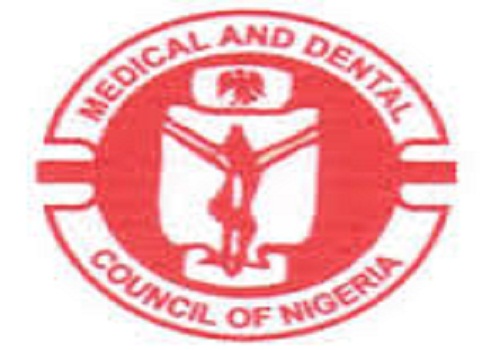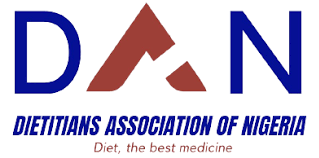Dr Olawale Dorusinmi-Etti is the Country Director of JSI, a global non-profit organisation dedicated to improving lives around the world through health, education and socioeconomic equity for individuals and communities. In this interview, he speaks on the importance of prevention services and commodities in reducing HIV transmission, JSI’s work in the area of digital health and health systems strengthening, among others.
How does digital health work?
Digital health is the systematic application of digital technologies and data to help healthcare providers and individuals make informed decisions for better health outcomes.
We support our clients as they apply appropriate, user-centered digital health solutions to solve public health problems. From mobile data collection to innovative supply chain solutions, we help countries and our partners maximise the potential of technological innovations to strengthen and build resilient and responsive health systems.
How well have digital health technologies been adopted in Nigeria?
Let’s start by establishing that the current goal is to enhance digital health technologies. Since the 1960s, the Federal Ministry of Health’s medical statistics system has tracked human resources for health, hospital activities and mortality and morbidity data. It published birth and death records annually or quarterly.
In 1988, the civil service reorganisation created the Department of Planning, Research and Statistics and introduced the first National Health Policy which in turn established a national health information system which became operational in 1999. Challenges included incomplete and inaccurate data collection and overly complex forms.
The policy was revised in 2004 to incorporate digital solutions to address data access and data quality, improving client services, leading to the creation of the National Health Facility Registry, NRHIMS and DATIM platforms. Through grants, various partners have developed numerous digital tools, including the following:
USAID Data.Fi: LAMIS, NOMIS, APPR
CDC PHIS3: OpenNMRS, NDR, DATIM
FMoH: NHMIS, LIMS, NHIS, NMDR
WHO: EOC SORMAS
KNCV: ComCARE, MATS APP, EWORS
UNICEF: Community Health Information System (CHIMS)
Here’s where we are today. On March 15, 2024, the FMOH inaugurated the Digital-in-Health initiative to drive the minister’s agenda on digital health. A top priority is creating interoperability between the systems that currently exist in Nigeria.
In what ways do you think the implementation of digital health strategies help improve health outcomes?
Digital technology and data can add immense value to health systems and improve health outcomes for the population in several ways.
Experiences in different countries have shown that digital technology strengthens health systems, improves health financing, makes public health more effective and reaches underserved populations. Given the health sector fiscal constraints faced by many low and middle-income countries, the efficiency delivered by digital technology can be game-changing.
Used effectively, digital technology makes health services more personal, prevents healthcare costs from increasing, reduces differences in care and makes for easy provision of health services. Using digital technology, clients can play an active role in their own health all the way through the continuum of care.
With digitisation, individuals can become more-proactive custodians of their own health and wellness, such as through increased access to and uptake of digital therapeutics. They also have more access to information, such as through treatment-adherence reminders, to manage their own wellbeing. Additionally, interoperable digital systems that use a common patient-identification system can enable longitudinal tracking that supports improved quality of care as clients and their data move through disparate healthcare delivery points and programmes.
Digital technology also supports progress towards Universal Health Coverage (UHC) by helping clients receive care quickly and efficiently and reduces burdens on health systems. Overall, these enhancements improve health outcomes.
A 2023 review found that the three largest economies in Africa – Nigeria, Kenya and South Africa – could save 15 per cent of health system costs by scaling up five digital solutions. These kinds of efficiencies can be truly game-changing.
How has JSI supported digital transformation of the Nigerian health sector?
We work with stakeholders to support greater healthcare reach, especially in remote areas. We have conducted GIS analysis to pinpoint the health facilities in these locations, which tend to lack a trained healthcare workforce. We’ve also supported the Nigerian government in bringing primary healthcare to communities, which includes services such as routine immunisation, to reduce the number of zero-dose children.
We’ve also helped establish and deployed an interactive dashboard at the subnational level to improve reporting, data quality and the use of data in programme planning in Abuja, Anambra, Lagos, Kano and Osun.
The dashboard displays different data elements and indicators pertaining to the tuberculosis (TB) care cascade, with an emphasis on TB notification for better decision-making and the timely resolution of issues.
Our team in Nigeria has also worked closely with the government to establish national and state-specific TB situation rooms to better manage health crises and challenges that arise and ensure that decisions are based on quality data.
How important are HIV prevention services and commodities, and in what way is JSI supporting the country in this area?
HIV prevention services and commodities are crucial to reducing HIV transmission.
Prevention helps curtail the spread of HIV and minimises its impact on public health.
In Nigeria, we implement the Total Market Approach project, funded by USAID, to support the uptake of HIV prevention commodities through a social media campaign called Keep It Safe and Sweet (KISS). JSI provides behaviour change communication through social media campaigns. In addition, we employ an infotainment approach to reach adolescents and young people at tertiary institutions in Nigeria with information on consistent condom use, HIV self-testing and pre-exposure prophylaxis while providing entertainment for students.
In what ways is JSI helping to strengthen Nigeria’s health system?
JSI has partnered to strengthen the Nigerian health system since 1988. Several of our projects are helping to strengthen Nigeria’s health system. We are strengthening the capacity of healthcare providers and government agencies to increase routine immunisation coverage among children under five years of age, especially those who have never been vaccinated.
Similarly, we are using digital health to improve access and use of data for better programmatic and investment decisions by the private sector. We are supporting policy reviews and updates to expand services to the private sector and maximise the comparative advantage of the different sectors of the health system. We have also provided various training to healthcare service providers to strengthen supply chain management, estimate commodity needs and establish supply plans to ensure uninterrupted availability of health commodities.
What is the role of supply chains in health systems?
Improving supply chains is an essential component of health systems strengthening. JSI has helped the government of Nigeria strengthen the supply chains for maternal and child health, HIV and AIDS, malaria, tuberculosis, and family planning commodities through a range of activities funded by USAID, UNFPA and the Global Fund. Among its accomplishments, JSI has streamlined distribution systems across commodities and health programmes and improved the government’s ability to plan for its commodity needs at both the national level and in a number of states. Our focus on supply chain optimisation for HIV commodities, in particular, has unified 12 separate supply chains, reduced costs and improved performance, establishing a model for harmonisation and integration across programmes.
SOURCE: DAILY TRUST NEWSPAPER





